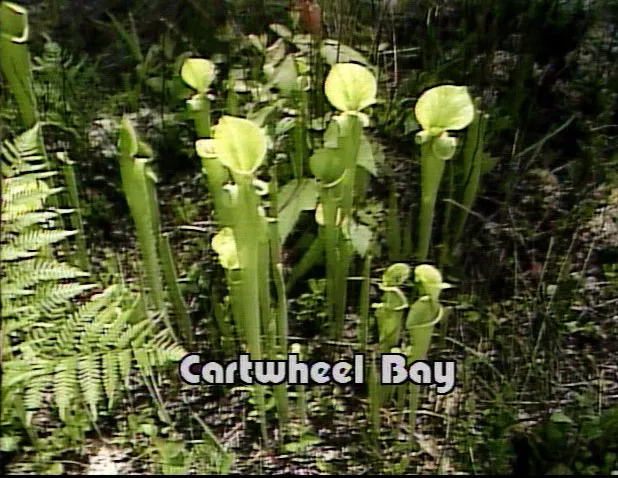
Photo
Bufo quercicus • Smallest toad in North America - 1.9 - 3.3 cm (0.75 - 1.25 inches) • White to orange stripe down middle of back • 4 - 5 pairs of dark blotches on back • Cranial crests not apparent •...
Although many Carolina Bays are temporary ponds that hold water only part of the year, these wetlands host a variety of wildlife, providing valuable habitat for such animals as frogs, salamanders, turtles, snakes and alligators. Many birds, such as herons, egrets and migratory waterfowl, live in Carolina bays. Also mammals, such as deer, raccoons, skunks and opossums get food and water from Carolina bays. In addition, microscopic organisms called zooplankton live in Carolina bays. Salamanders and frogs are among the most abundant wildlife found in Carolina bays. As amphibians, these animals spend part of their lives in the water; as adults, they depend on Carolina bays as breeding sites where they lay their eggs.
Average water depth and soil type have a large influence on the types of plants found in and around Carolina bays. Many bays contain trees such as black gum, sweet gum, magnolia, bald cypress and maple, and shrubs such as sumac, button bush, gallberry and red bay. Also common in Carolina bays are water lilies, sedges and various grasses. Cartwheel Bay also offers several varieties of rare and beautiful carnivorous plants.
Closed captioning has been provided for this broadcast program.

Photo
Bufo quercicus • Smallest toad in North America - 1.9 - 3.3 cm (0.75 - 1.25 inches) • White to orange stripe down middle of back • 4 - 5 pairs of dark blotches on back • Cranial crests not apparent •...
Photo
• Polygala lutea • Compact, head-like clusters of brilliant orange flowers 6 mm (0.25 inches) long • Leafy, simple or branched stems • 5 sepals with 2 larger lateral ones forming petal-like "wings" •...
Photo
• Libellula semifasciata • Fast flying dragonfly • Brightly colored • Incomplete bands across wings • Wingspan noticeably greater than body length • Hovers • Live near ponds and swamps
Photo
Clethra alnifolia • Member White Alder Family • Tall, many-branched, leafy shrub • Height 90 - 300 cm (3 - 10 feet) • Upright clusters of white fragrant flowers • Sharply toothed, wedge-shaped leaves...
Photo
Pinus serotina Also known as Swamp Pine Similar to Pitch Pine, but more southern Height to 80 feet Flexible needles Trunk sprouts often present Nearly-round, 2 - 3 inch cones Crown branches tend to be...
Photo
Sarracenia purpurea Carnivorous herb 50 cm tall Also called Hunter's Horn Large, solitary red-purple-green flower appears atop long stalk in mid to late spring Trumpet-shaped hollow leaves with...
Photo
Melanerpes erythrocephalus Strikingly colored with entire head red Blue-black wings and tail with white below Immature bird resembles adult except for gray head Fond of groves of dead or dying trees...
Photo
• Quercus pumila • Grows in clusters running along the ground • More bush than tree
Photo
• Tramea carolina • Large, dark markings at base of wings, when flying, look like saddlebags bouncing off Pony Express rider • Red to red-brown body with olive-brown thorax • Clear fore wings • Hind...
Photo
• Kalmia angustifolia • Evergreen shrub • Leaves to 2.5 inches long • Height 3 feet • Rosy red to crimson flowers in loose clusters • Foliage poisonous if eaten in large amounts by livestock •...